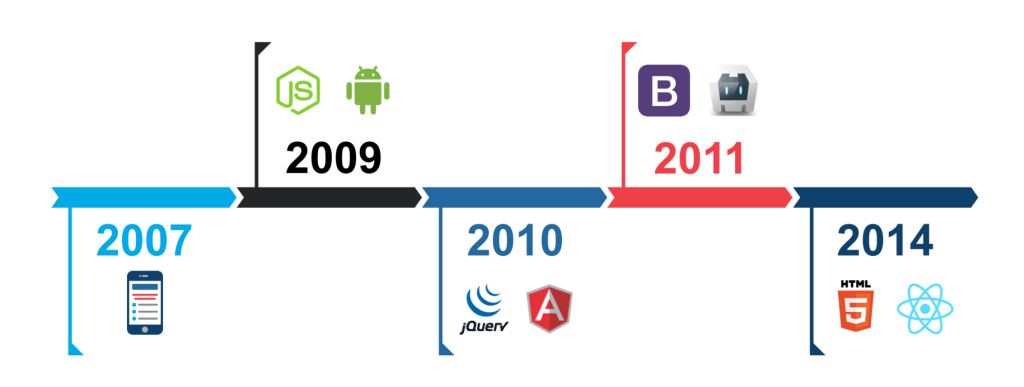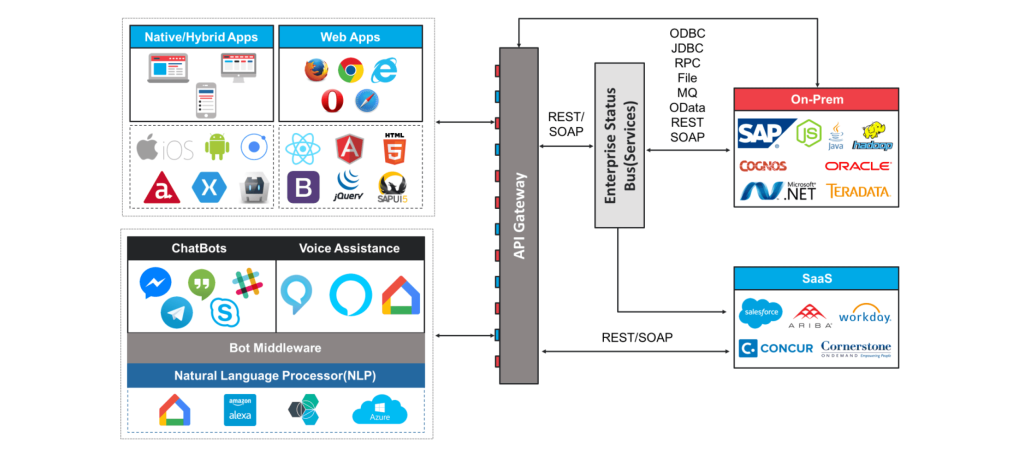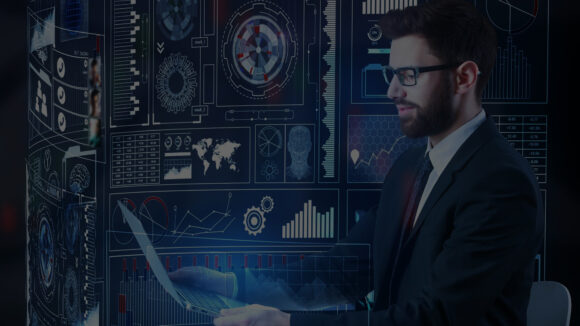Since the introduction of client-server architecture applications, the success of applications was measured on the availability of features, the richness of functionality and its technical merits. Having User Interface was good but it was not a deciding factor and relatively less emphasis was placed on how the user interacts with the application.
Having a Graphical User Interface (GUI) over the Command Line Interface (CLI) was sufficient to get past the evaluation criteria. But something happened in the year 2007 which has radically changed how the applications are perceived. It was the year that the first iPhone was introduced – marking the unofficial beginning of digital transformation and consumerization of technology through an elegant User Experience.
In a world where point-n-click was the only way to interact with an application, the new gestures introduced with iPhone left the users spellbound – replacing click with touch, swipe to navigate, pinch to zoom and a shake gesture for undo-redo.
An unofficial beginning of Digital Transformation
In the following years since 2007, a new norm was established for User Experience and saying that your application cannot be accessed on a mobile device was not a choice. This expectation gave rise to a new paradigm called Omni Channel – the ability to access the application from PC, Mac, smartphone, tablet, phablet, etc.
While the computing world was busy refactoring their applications for modern-day UI with rich Visual controls, the consumer world was getting caught up with Conversational UX – Chatbots, Siri, Amazon Echo and more. The Enterprise Software providers seem to be an on a perpetual catch-up mode, with innovation in UI technologies growing exponentially, it is not possible for the providers to introduce these into their platforms and solutions at the same pace.
Gap in Consumer Tech. and Enterprise Tech.

Miracle and UX
With over 20 years of experience in implementing turnkey solutions at mid to large enterprises, Miracle has recognized that there is a huge gap between the Enterprise and Consumer technology. This gap is growing wider as consumer technologies continue to innovate and evolve at a rapid pace.
Our 2-Tier Dev Approach for Extended Shelf Life
To bring the best of both worlds to our customers, Miracle’s strategy is a two-tiered approach, an API layer encapsulating business functionality on open standards and a UX layer that is built on top of the API layer. This separation automatically extends the shelf life of technology investments and new UX can be introduced without causing major disruptions to the existing ecosystem.
With dedicated CoE teams for Integration and Frontend technologies, Miracle has helped several customers in conceiving and implementing customer-loving Applications with a foundation of a frictionless API and an Omni-channel UX.
Competency and Capabilities

API Integration
With consumer’s of Digital Applications becoming ever-demanding, enterprises need to enable themselves to make rapid changes without having to wait for long change cycles. With the Continuous Integration Solution enterprises can experience,
- API Strategy and Roadmap
- Partnerships with IBM, Mulesoft, Dell Boomi and SAP
- iPaaS, Hybrid Architecture
- API Manager
- API Security
- SAP Integration (NetWeaver Gateway, ODATA, HANA Cloud Platform, HANA Cloud Integration)
Frontend Technologies
Visual UX
- Native Apps on iOS and Android with full support for application lifecycle management from development to provisioning to App store, push notification, version management, etc.
- Hybrid Apps based on Cordova platform
- Web Apps based on HTML5 and SPA (Single Page Architecture). Popular JavaScript frameworks; AngularJS, React JS, Data.js, Bootstrap, jQuery etc.
Conversational UX
- Chatbots on channels like Slack, Skype, Facebook Messenger and more
- Digital Assistants like Amazon Alexa, Microsoft Cortana, Google Home
- Bot Framework to integrate with popular NLP engines such as Microsoft Luis, IBM Watson, Alexa, and more





